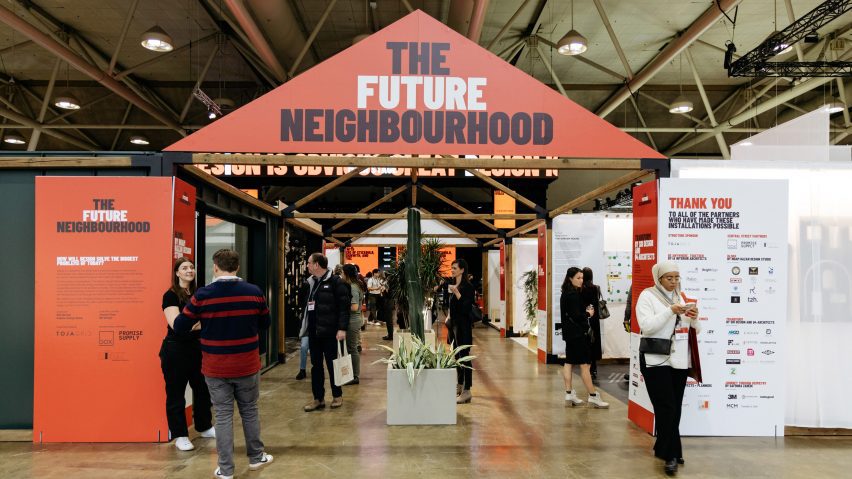
Future Neighbourhood exhibition at IDS Toronto features timber transitional housing
Interior Design Show Toronto director Will Sorrell has curated an exhibition of speculative spaces, including a model for transitional housing by architecture studio SvN for sites in mid-development.
Future Neighbourhood was an exhibition in the centre of the design trade fair Interior Design Show Toronto 2024 (IDS Toronto), which featured six different installations showcasing design's "ability to shape our future".
Each booth addressed a solution to an urban problem, with nearly half of the booths addressing different aspects of the housing crisis, which Sorrell pinpointed as the most pressing concern in today's urban environment.
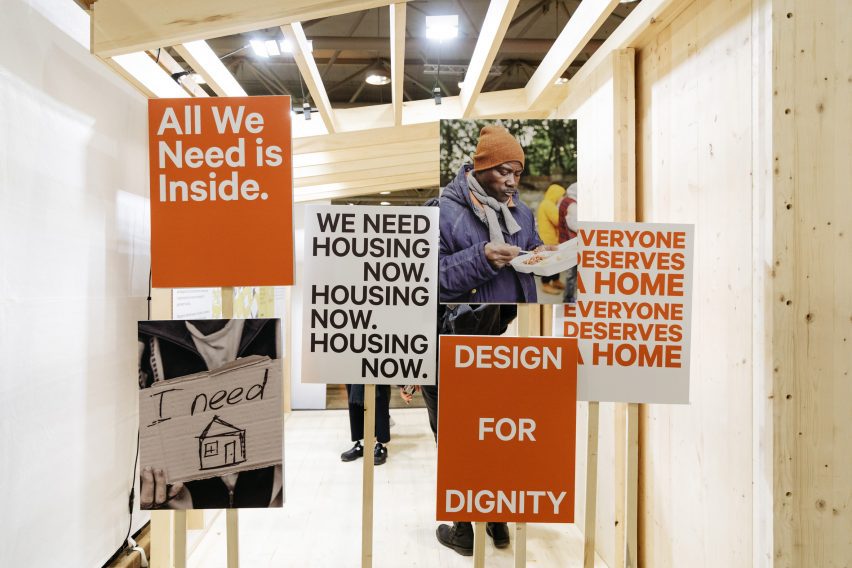
"We looked at the applications and realised that housing was going to be one of the main conversations," Sorrell told Dezeen.
"It reflects what everyone is worrying about right now and one of the big problems that designers are preoccupied with solving," he said.
He also said that the exhibition tried to address the fair's two audiences – the design industry and the public.
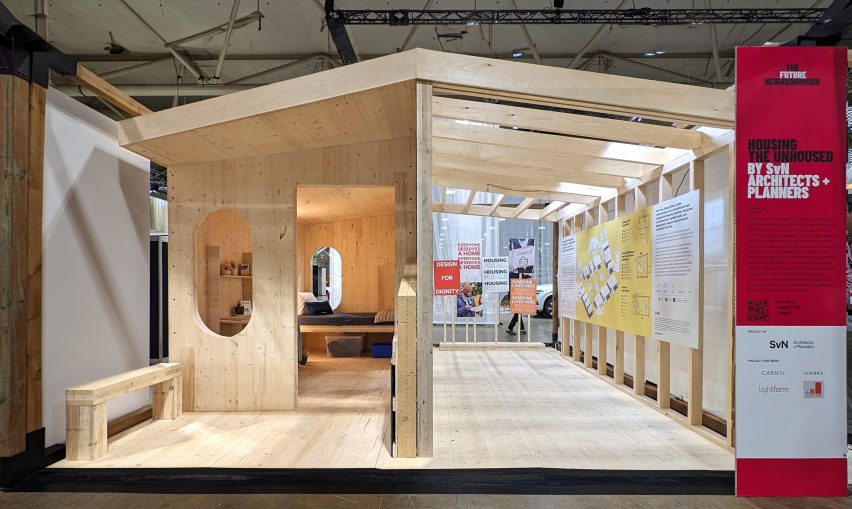
The exhibition took place in an enclosed miniature "neighbourhood" in the middle of the fair, with a large sign with the name of the exhibition bridging the entryway and central thoroughfare, towards which the booths were oriented.
One of the booths, called Housing the Unhoused, was put together by SvN in collaboration with the non-profit Two Steps Home and technology company Cabn.
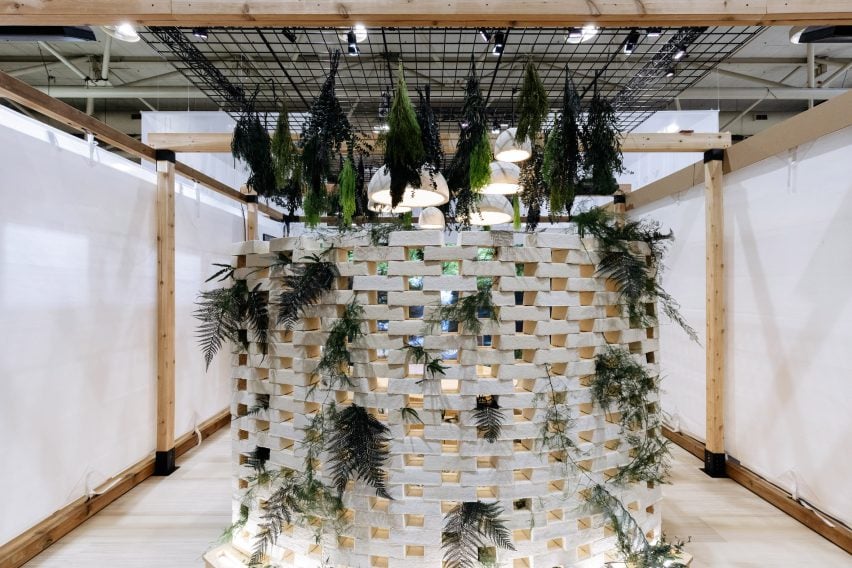
The project includes a model for temporary housing made from cross-laminated timber meant to be placed on building sites in transition and provide a step of housing between encampments and more permanent housing.
Designed with energy efficiency and low-cost materials in mind, the "cabins" are meant to "to break the cycle of homelessness".
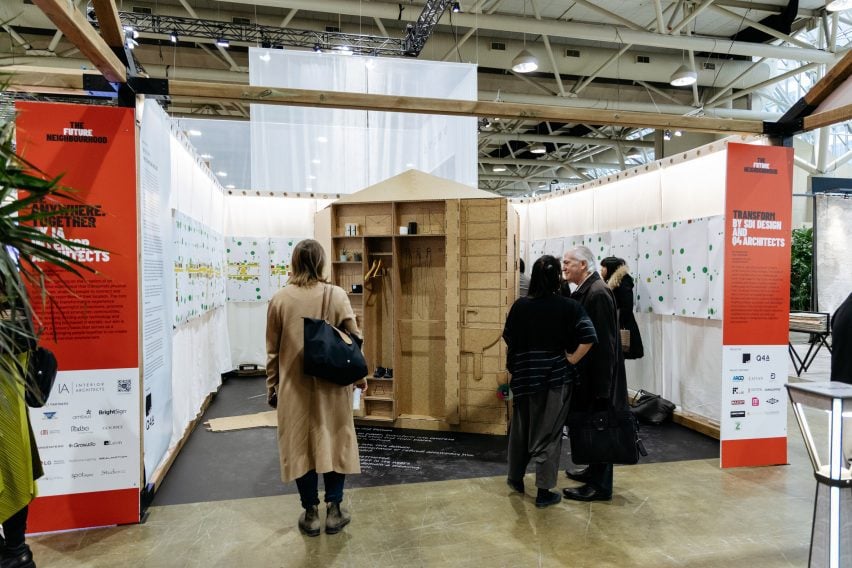
"The Two Steps Home project directly ties to SvN's work across the full spectrum of housing and the firm's vision for planning and designing, resilient, inclusive, and complete communities," SvN chief growth officer Laura Sellors told Dezeen.
"Presenting a project of this typology within the context of IDS was, we hope, a bit provocative and a reminder that communities and the future of our neighbourhoods can be designed equitably and inclusively, where everyone has access to good design."
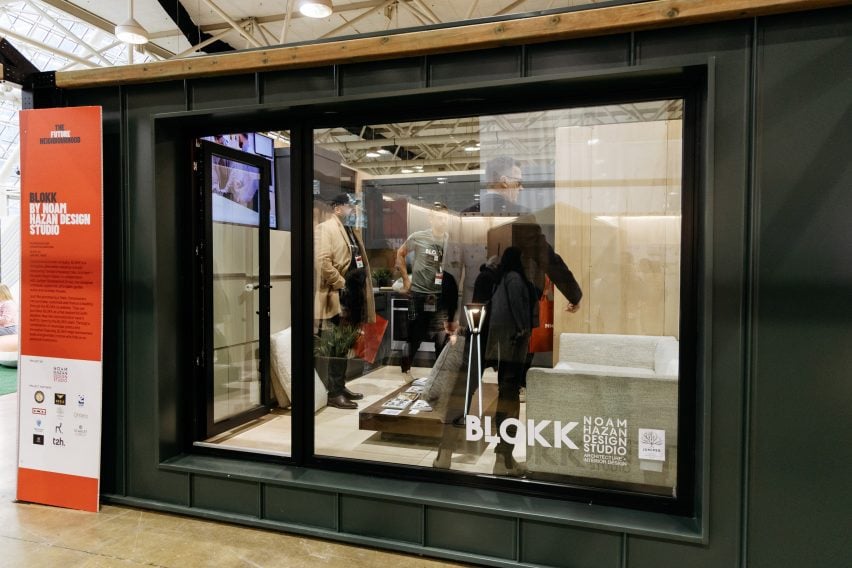
Another project, Transform, by design studios SDI and Q4 was geared towards housing the elderly in new, more inclusive ways.
The booth included a cardboard structure decorated with graphics depicting features of micro infrastructure and further graphics on the ground and walls showed how these features could integrate with infrastructure and zoning more conducive to ageing people.
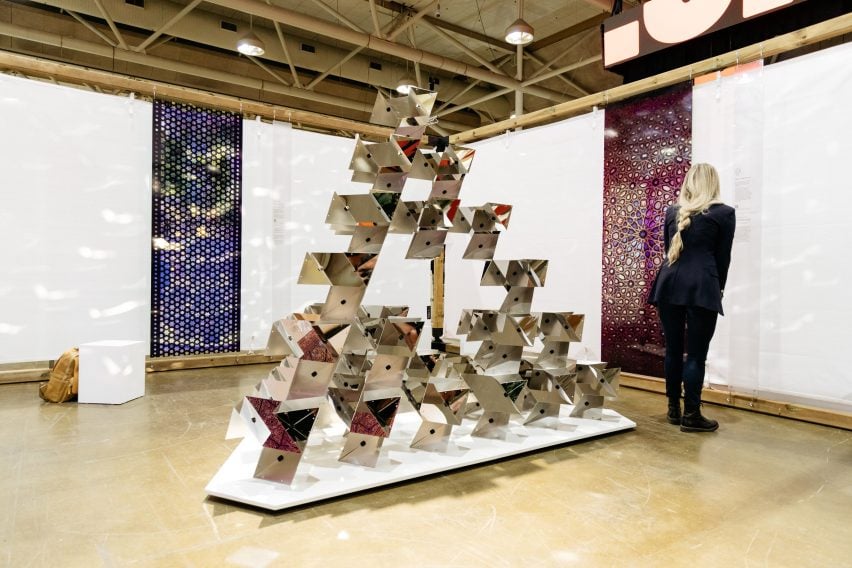
Also in the vein of the housing crisis, local designer Noam Hazan showcased a modular accessory dwelling unit called Blokk that works on a "Tesla-like" model where buyers can purchase models online, customise them and have them delivered in a flat pack.
Technology was another consideration for the neighbourhood of the future.
Local studio IA Interior Architects created a booth that integrated both biomaterials and virtual reality, with a breezeblock wall made from bio-bricks and a wrap-around screen that created a scenic backdrop for meeting rooms or relaxing spaces in offices.
Design firm Syllable took a similar approach with its project Melo, creating an installation showing a space that combined "binaural" lighting, scents, sound and textures.
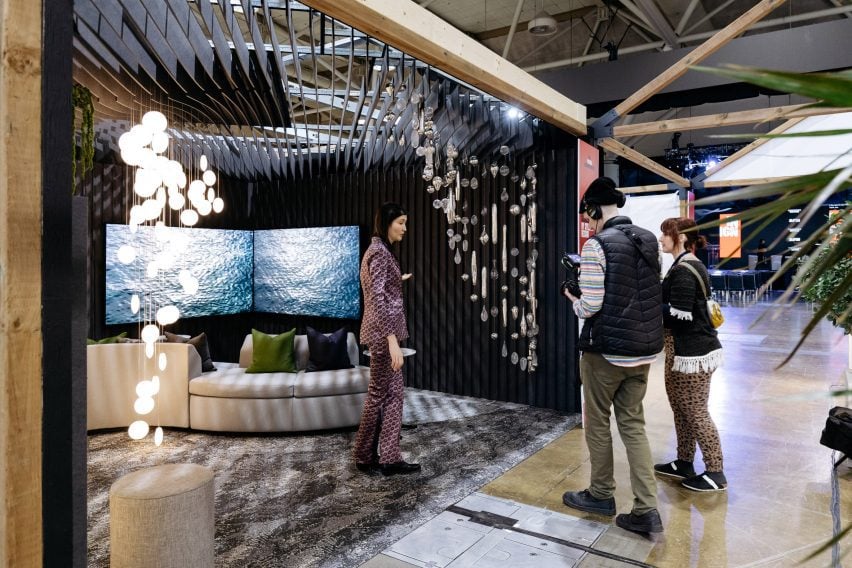
Finally, architect Safoura Zahedi created a sculpture made of reflective material based on her study of Islamic architecture. Called Journey Through Geometry, the installation was created as an experiment in new models of "spiritual design tools" to engage people with the built environment.
Other projects that address homelessness include a portable battery developed by Luke Talbot that allows phones to be charged by rental bikes and a housing block in California for families experiencing homelessness.
The photography is by Arash Moallemi unless otherwise noted.
IDS Toronto 2024 took place from 23-26 January in Downtown Toronto. For more worldwide events, exhibitions and talks in architecture and design, visit Dezeen Events Guide.